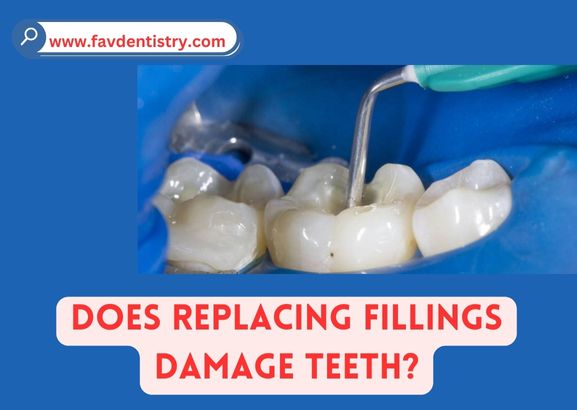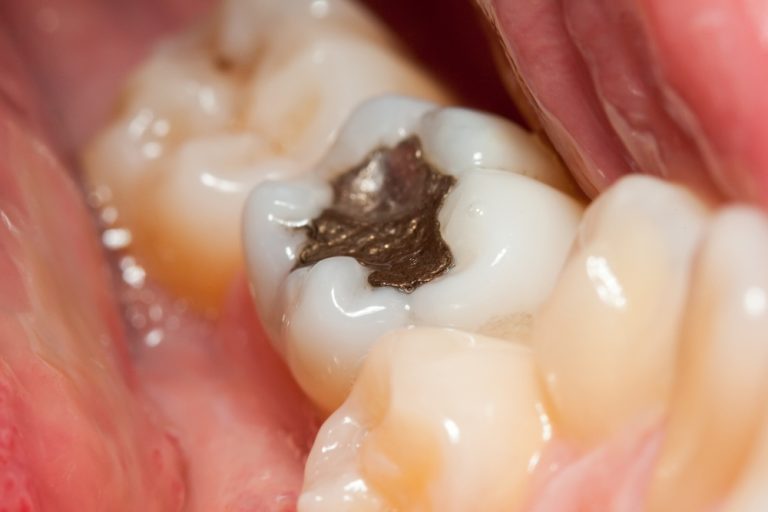Last Updated on 3 weeks by DR. ALBIN SIPES
White fillings and silver fillings are both types of dental fillings used to restore teeth. White fillings, also known as composite resin fillings, are made of a tooth-colored material that blends in with the natural teeth, providing a more aesthetic option.
Silver fillings, also known as amalgam fillings, are made of a mixture of metals, including silver, tin, copper, and mercury. While silver fillings are durable and long-lasting, some people prefer the more discreet appearance of white fillings. White fillings are also considered a safer alternative due to concerns about the potential health risks associated with mercury in silver fillings.
Overall, the choice between white and silver fillings depends on the individual’s aesthetic preferences and concerns about mercury exposure.
Understanding Dental Fillings
Dental fillings play a crucial role in maintaining oral health and restoring damaged teeth. Understanding the importance of dental fillings is essential. They help to prevent tooth decay and provide structural support. White fillings and silver fillings are the two most commonly used types.
White fillings, also known as composite fillings, are made of tooth-colored materials that blend seamlessly with the natural teeth. They are aesthetically pleasing and suitable for small to medium-sized cavities. On the other hand, silver fillings, or amalgam fillings, are made of a mixture of metals and are highly durable.
They are recommended for larger cavities and have a longer lifespan. Each type has its own advantages and disadvantages, and the choice depends on factors like the location of the cavity, personal preferences, and budget. Understanding the differences between white and silver fillings can help make an informed decision when it comes to dental treatment.
Advantages Of White Fillings
White fillings offer several advantages compared to silver fillings. Firstly, they provide a more aesthetic and natural appearance, blending seamlessly with the surrounding teeth. Secondly, white fillings have bonding properties that allow for a better tooth structure, resulting in a stronger and more long-lasting restoration.
Moreover, they require less damage to healthy tooth structure during the placement process, making them a preferred choice for many patients. Lastly, white fillings eliminate the risk of metal allergies, as they are made of composite resin material. Overall, these advantages make white fillings a popular choice for those looking for a more visually appealing and comfortable dental restoration option.
Benefits Of Silver Fillings
Silver fillings offer several benefits compared to white fillings. Firstly, they are incredibly durable and long-lasting. Their robust nature ensures they can withstand constant pressure from chewing and grinding without breaking or deteriorating. Secondly, silver fillings are cost-effective, making them a more affordable option for individuals seeking dental treatment.
Moreover, they have a high resistance to wear and tear, allowing them to maintain their structural integrity for a longer period. Another advantage is their high success rate for larger fillings, as they provide reliable strength and support. When it comes to restoring larger cavities, silver fillings are often the preferred choice due to their durability.
In conclusion, silver fillings shine in terms of their longevity, affordability, resilience, and effectiveness in treating larger restorations.
Factors To Consider In Choosing Fillings
Factors to consider when choosing fillings include the location and size of the cavity. It’s important to take into account patient preferences and concerns. Budget considerations should also be taken into consideration. Future dental needs should be considered as well.
The Procedure For White Fillings
White fillings and silver fillings are two common options for dental repairs. The procedure for white fillings involves several steps. First, a dental examination and treatment planning are done. Next, tooth preparation and anesthesia are administered. Then, the filling material is placed and shaped accordingly.
Finally, polishing and final adjustments are made. It is important to note that white fillings are made of a tooth-colored material, while silver fillings are made of amalgam. Both have their benefits and drawbacks, so it’s best to consult with a dentist to determine the most suitable option for individual needs.
Ultimately, the goal is to restore the tooth’s functionality and aesthetics while ensuring long-term oral health. Choose the right filling material with the guidance of your dentist.
The Procedure For Silver Fillings
Silver fillings are commonly used in dental procedures. They involve several steps. First, the dentist will examine your teeth to determine the treatment plan. Then, tooth preparation and anesthesia are done to ensure a painless experience. The next step is placing and shaping the filling material.
This helps to restore the tooth’s structure and strength. Finally, the dentist will polish the filling and make any necessary adjustments for a perfect fit. Silver fillings have been used for many years and are known for their durability. However, many people are now opting for white fillings, which blend in with the natural color of your teeth.
It’s important to discuss your options with your dentist to determine which filling material is best for you.
Comparing Long-Term Outcomes And Risks
White fillings and silver fillings are often compared for their long-term outcomes and risks. These fillings have different characteristics when it comes to resisting future decay and damage. There is a potential for tooth sensitivity with both types of fillings.
Additionally, there is a potential for restoration failure or replacement over time. Long-term maintenance and care are important for the success of any filling. It is crucial to follow good oral hygiene practices and visit your dentist regularly. By doing so, you can ensure the longevity and effectiveness of your fillings without any discomfort or complications.
So, when considering white fillings vs silver fillings, it is important to weigh the advantages and potential drawbacks of each option based on your specific dental needs.
Professional Recommendations And Expert Opinions
Professional recommendations and expert opinions regarding white fillings vs silver fillings are crucial in making informed dental decisions. Dentists offer valuable insights on filling options based on their extensive experience. By examining research studies, we gain a better understanding of the pros and cons.
In addition, case studies and patient testimonials provide real-world evidence of the effectiveness of different types of fillings. Dentists carefully consider factors such as aesthetics, durability, and potential health risks when recommending fillings to their patients. It’s important to consult with a dentist who can provide professional advice tailored to individual needs and preferences.
Understanding the perspectives of experts will help patients make well-informed choices for their dental health.
Frequently Asked Questions For White Fillings Vs Silver Fillings
What Are White Fillings Made Of?
White fillings, also known as composite fillings, are made of a mixture of resin and glass or ceramic particles. This material is tooth-colored and blends seamlessly with the natural teeth, providing a more aesthetically pleasing option compared to silver fillings.
Are White Fillings Better Than Silver Fillings?
White fillings offer several advantages over silver fillings. They are mercury-free, more aesthetically pleasing, and can be bonded directly to the tooth, requiring less removal of healthy tooth structure. Additionally, composite fillings are known to be more resistant to temperature changes, reducing the risk of tooth sensitivity.
How Long Do White Fillings Last Compared To Silver Fillings?
The lifespan of white fillings can vary depending on factors such as oral hygiene, chewing habits, and the size of the filling. On average, they can last anywhere from 7 to 10 years, while silver fillings can last up to 15 years or more.
Regular dental check-ups can help monitor the condition of the fillings and ensure their longevity.
Do White Fillings Need Special Care?
White fillings do not require any special care beyond regular oral hygiene practices. It is important to brush and floss regularly, avoid biting on hard objects, and maintain regular dental visits for professional cleanings and check-ups. By following these practices, white fillings can remain durable and functional for an extended period.
Conclusion
When deciding between white fillings and silver fillings, it is crucial to consider several factors. White fillings, also known as composite fillings, offer several advantages such as natural appearance, minimal tooth reduction, and better bonding to the tooth structure. They are a suitable option for people who have cosmetic concerns or allergies to metal.
On the other hand, silver fillings, or amalgam fillings, are durable, cost-effective, and have a long track record of success. They are commonly used for back teeth and in patients with a high risk of cavities. Ultimately, the choice between white fillings and silver fillings depends on the individual’s preferences, budget, and dental needs.
Consulting with a dentist can provide further guidance and help make an informed decision. Remember, maintaining good oral hygiene, regular dental visits, and a healthy lifestyle are essential for the longevity of any dental filling.






